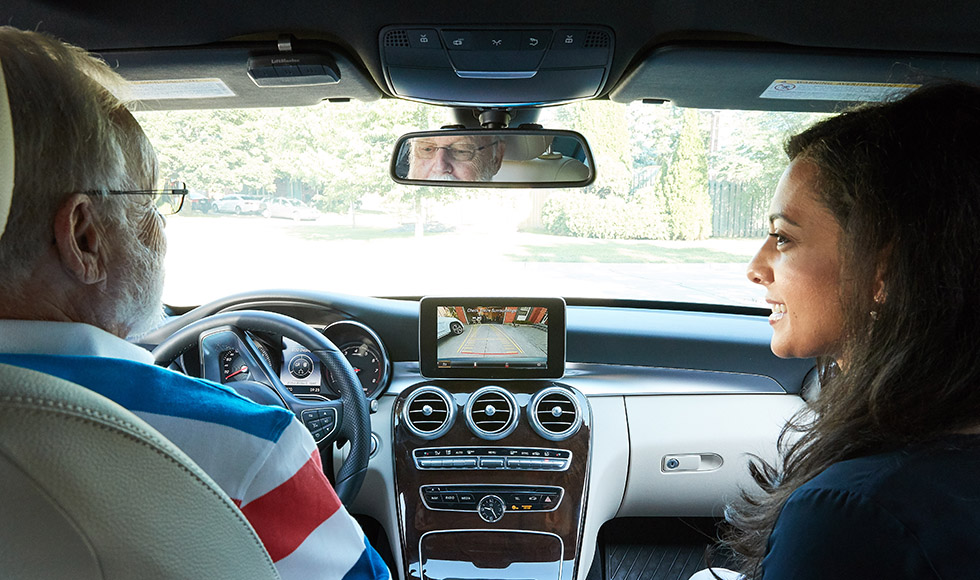Study shows older drivers use rear view cameras, but would benefit from training

McMaster University researcher Ruheena Sangrar, left, is studying how older adults, like Larry Swinn, use rear view cameras.
BY Tina Depko, Health Sciences
September 12, 2018
What impact do advanced driver assistance systems have on older drivers?
Researchers at McMaster University are asking that question, with a new study focused specifically on rear view cameras that are among the first of this technology to be mandated for vehicles.
The study results, published in the journal Gerontechnology, suggest that while older drivers find the rear view cameras helpful, they would appreciate more education on how to use them.
“In the United States alone, more than 200 pedestrians are killed annually by drivers who are backing up their vehicles,” said Ruheena Sangrar, first author of the study, an occupational therapist and PhD candidate at McMaster’s School of Rehabilitation Science.
“While on-road studies have found that rear view cameras can improve rear visibility and obstacle recognition, we want to understand how older drivers are adapting and using this technology.”
McMaster researchers conducted a study with 15 licensed drivers aged 65 years and older, with an average age of 77.8 years. The study group consisted of 10 men and five women. Drivers had owned their vehicle with a rear view camera for 1.7 years on average, and drove more than four days a week.
They were interviewed about their experiences using the rear view camera in their vehicle. Among the questions asked were how they learned to use the technology, how they felt while using it, and how the system works compared to their expectations.
“From their responses, our analysis suggested they were aware of the purpose of rear view cameras before they purchased their vehicles, but that it took time and practice to understand how the cameras worked, and that the technology was indeed advantageous to their everyday driving,” said Sangrar.
“Participants also shared personal stories of how they learned to judge distance behind their vehicle using this system. For example, a 76-year-old driver backed up towards pieces of wood on his driveway, while another 74-year-old driver asked her husband to stand behind the vehicle while she reversed.”
Sangrar noted the study results are especially timely considering that, as of 2018, all passenger vehicles that weigh less than 10,000 pounds manufactured in Canada and the Unites States are required to have a rear view camera.
The study comes with a list of recommendations, one being that access to training early in the rear view camera adoption process should focus on emphasizing the purpose, operation, and limitations of the system. Another recommendation is that training and education for rear view cameras, and other advanced driver assistance systems, should extend beyond initial interactions with the technology.
“Studies like this one from McMaster are needed to help inform automobile designers and manufacturers,” said Brenda Vrkljan, senior author on the study and associate professor in occupational therapy in the School of Rehabilitation Science.
“Older drivers’ use of vehicle technology has the potential to improve their behind-the-wheel performance and even extend their safe driving years,” a Vrkljan, who was also the lead investigator of the McMaster-Candrive site, which was part of a cohort study that tracked the health and driving behavior of Canadians aged 70 and older for five years. “Understanding the perspectives of older drivers when it comes to learning to use advanced driver assistance systems is critical to improve the design of this technology.”
The study was supported by AGE-WELL – A Network of Centres of Excellence (NCE) and the Labarge Opportunities Fund.
Find the article in the journal Gerontechnology here.
Read the Brighter World story here on Brenda Vrkljan and her research on analyzing the driving habits in older Canadians.

